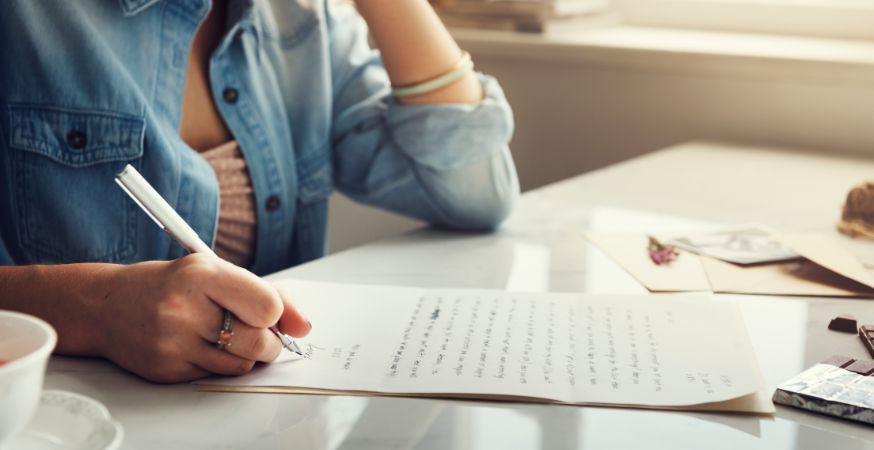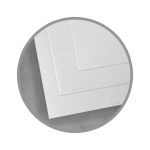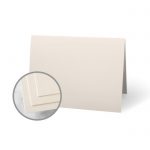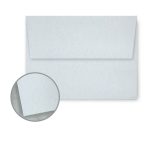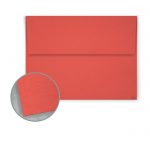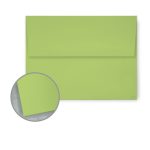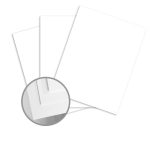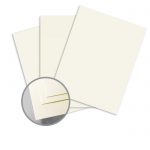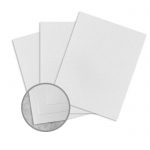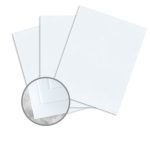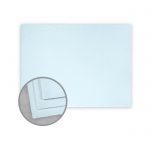In a digital age, handwritten letters offer a personal and meaningful connection that emails and texts lack. To choose the best stationery for writing letters, keep your paper simple, elegant, and neutral. Stock up on various sheet sizes, weights, finishes, and coordinating envelopes for different occasions.
Inboxes overflowing with unread emails, phones constantly buzzing with instant messages, and nothing but bills and flyers in your mailbox—sound familiar?
In 2024, the timeless tradition of letter writing has become a rare and cherished practice. Overshadowed by the speed and convenience of digital communication, many consider handwritten letters to be relics of a bygone era. To those folks, we pose two questions: How many unread emails are languishing in your inbox? And how often do you receive something in the mail that isn’t a bill or formal notice?
Probably too many emails and hardly any fun mail, right?
At The Paper Mill Store, we think it’s time to bring some joy back to our mailboxes.
The whole process of letter writing—from picking out the perfect paper and sitting down with your favorite pen (we know you have one) to your recipient opening your letter in the comfort of their own home—is something special that digital communication just can’t match.
Unlike the fleeting nature of digital messages, a handwritten letter offers an unparalleled sense of connection. To quote The Art of Manliness (note: manliness is not required for writing letters), a letter is “something tangible from your world [that] travels through machines and hands, and deposits itself in another’s mailbox”. We think that a handwritten letter adds a touch of elegance and personality that emails and texts lack (no matter how many emojis you use)—not to mention the assurance that what you’re reading wasn’t written by an emotionless AI chatbot.
In this blog post, we will explore the lost art of letter writing, including:
- Why we should still write letters in 2024
- Who to write letters to
- Different types of letter writing
- How to choose the best stationery for writing letters
- How to structure and write a letter to a friend
Join us as we embark on a journey to revive a practice that promises to bring a little more joy and a personal touch into our lives.
Why We Should Still Write Letters in 2024
Why bother to sit down and write a letter in 2024 when an email is so much faster and texting is so much easier?
Fast and easy communication has its place, but what it doesn’t have is that personal touch that makes letter writing, or even speaking on the phone, so compelling.
The act of letter writing can help you feel more in touch with the person you’re writing to. Taking a moment out of your normal schedule to sit down, breathe, and write about your recent experiences, thoughts, and feelings rather than dashing off a quick, typo-ridden text or DM requires intentionality, thought, and dedication, all of which can help us regain a sense of balance and connection.
But wait—don’t you need a reason to write a letter?
You sure don’t! “Just because” is a perfectly good reason to write a letter to someone you care about.
A “just because” letter can be extra special, especially if it comes at a time when someone needs it most. But if you need a bit of extra prompting, here are some other occasions upon which to send a letter:
- To congratulate someone
- To express gratitude
- To say “I love you”
- To make an apology
- To extend forgiveness
- To console grief
- To set boundaries in a relationship
Handwritten letters can serve these purposes and more in the here and now, but they also become historical records, providing a window into the past that digital communications just can’t replicate. Which sounds more pleasant to you? Thumbing through a box of yellowed handwritten letters, or sitting behind yet another screen sorting through a digital archive of spam, order confirmations, and maybe the occasional personal email?
Who to Write Letters to
Need inspiration for who to write to? Start here:
- Far-flung friends and family (especially grandparents, the OG letter-writers)
- Pen pals—tons of websites can help connect you with pen pals around the world
- Your local representatives. Share your opinions!
- Yourself! Either to send it right away or to mail it at a future date. We love to do this right after a vacation or special experience. You can document the experience in a letter, seal it in an envelope and set it aside, then post it at a later date for a reminder of good times past. Bonus points if you write and post the letter while you’re on vaca.
Different Types of Letter Writing
Not all letters are created equal, and there are different types of letter writing for different circumstances. Here are 6 different types of letters:
- Formal letters. Formal letters are often professional, directly addressing specific issues. They typically follow a specific format, such as block style or the American Mathematical Society (AMS) style, with a formal tone.
- Informal letters. Informal letters are typically personal letters—basically one-half of a written conversation, generally between friends and family. There is no need to adhere to any structure or degree of formality in an informal letter. You can use a casual or emotional voice, and it can be as short or long as you like.
- Business letters. Business letters are a type of formal letter sent specifically amongst business correspondents, usually containing key information like price quotes, order information, complaints, claims, and other business-specific topics.
- Official letters. Official letters are formal letters written to inform offices, branches, and subordinates of official information such as rules, procedures, regulations, events, etc.
- Social letters. Social letters can be formal or informal and are written on the occasion of a special event, such as congratulations, condolences, or invitations.
- Circular letters. Circular letters are letters that announce information to a large group of people, such as a change of address.
For our purposes, formal and informal letters are the two key types of letter writing to keep in mind as you read the rest of this guide.
As a general rule, formal letters are often best typed and printed, while informal letters benefit from the personalized touch of being handwritten.
How to Choose the Best Stationery for Writing Letters
“Quality stationery adds a weight of sincerity to your words.”
Here are a paper pro’s best tips for choosing the best stationery for writing letters:
1. Keep your stationery simple, distinguished, and elegant
We love a brightly colored sheet of paper as much as anyone, but when it comes to writing letters, neutral tones like white, ivory, or gray are the winners. If you’re craving a subtle pop of color, light blue, pink, or green are a good choice as well.
Paper weight and finish can help complete the look. Opt for something slightly weightier than your average sheet of printer paper, such as 24 lb Writing. When it comes to finish, you can’t go wrong with smooth, but if you want to add a little tactility to your missives, linen, felt, or laid are also lovely options.
2. Stock up on different sheet sizes
We recommend keeping a few different sheet sizes on hand, such as:
- Correspondence cards—perfect for short messages, correspondence cards are usually found in A2, A6, or A7 sizes, and are often made of cardstock.
- Full sheets—standard 8.5” x 11” sheets that are slightly heftier than your usual printer paper, perhaps in a neutral shade or with a subtle textured finish.
- Folded note cards—blank folded note cards can be stamped with a monogram (or stamp of your choosing), embellished with hand-drawn designs, or simply left blank with a written message inside. Folded cards are handy to have on hand if you’re enclosing something in your letter, such as a gift card, photo, or other flat token.
3. Stock up on envelopes to match your various sheet sizes
Your envelopes don’t have to be an exact size match, but the present a more polished image when they at least roughly correspond to the size of the enclosed letter.
We suggest keeping two or three sizes in stock:
- No. 10 business envelopes for folded letters.
- One or two announcement envelope sizes that match your correspondence cards or notecards. For A2 cards, opt for A2 envelopes. For A6 cards, go for A6 envelopes. And for A7 cards, (you guessed it) A7 envelopes are the winner.
When it comes to envelopes, there are fewer considerations when it comes to color. Bright, vivid envelopes will be eye-catching in someone’s mailbox, but for more professional or serious correspondence, a neutral tone is ideal.
TPMS TIP: Consider getting your envelopes pre-printed with your return address so you don’t have to write it out by hand every time you send a letter.
4. Think about the occasion
Are you writing a quick note to catch up with a friend? A short message on a correspondence card with a brightly colored envelope will do the job well. But if you’re writing something a bit more substantial like a congratulations or condolence note, a longer letter on a full sheet sent in a neutrally coloured envelope might be more appropriate.
What to Include in Your Correspondence Kit
What supplies should you have on hand to aid in your newfound letter-writing pursuits? Here’s what you need:
- Stationery
- Envelopes
- Stamps
- Address book
- A Correspondence record/ledger to keep track of your letter writing
- Letters to be answered
- Writing utensils
- Address labels
- Stickers for fun
Let’s take a closer look at 1 and 2—stationery and envelopes.
Stationery
There’s no limit to the variety of stationery items you can include, but we recommend starting with these basics:
Sizes
- Correspondence cards for short messages
- Standard 8.5” x 11” sheets for longer letters
- Folded notecards for when you have something to enclose in your letter, such as a gift card, photo, or other flat token
Colors
Finishes
- Cotton stock adds a touch of tactile luxury to your most special correspondence
- Smooth finish is a classic choice
- Linen adds a hint of sophistication
- Laid and felt finishes add some tactile toothiness
If you write with a fountain pen, look for fountain pen-friendly paper, such as onion skin paper. That means no bleed-through or feathering. Sheen, saturation, and ink drying times can also be a factor.
Envelopes
Start with at least these two standard sizes
- No. 10 business envelopes for folded letters and professional correspondence
- One or two announcement envelope sizes that match your correspondence cards or notecards. Choose the envelope size that matches your correspondence cards: A2 envelopes for A2 cards, A6 envelopes for A6 cards, and A7 envelopes for A7 cards.
When it comes to envelopes, color isn’t as much of a concern. For professional or business correspondence, neutral shades like white or ivory are recommended. For personal use, go with whatever color speaks to you!
How to Structure and Write a Letter to a Friend
Now that you have your stationery kit assembled, let’s talk about how to write a letter to a friend, starting with the basic structure.
And when we say “basic”, we mean basic.
Follow this simple structure:
- Date (the date of writing)
- Address—eg. “Dear ___”
- The body (ie. your actual letter)
- Closing—“Yours truly”, “Sincerely”, “Best wishes”, etc.
- Your signature
- Any post-scripts
Easy, right?
The structure might be simple, but the actual act of writing a letter can be quite challenging. After all, you can hardly just hit backspace to delete a poorly formed thought or sentence. Once it’s on the paper, it’s on the paper for good. If you’re feeling the pressure, here are a few tips to help you write a letter:
- Be yourself! Write as you would talk. The beauty of personal letters is that they are, well, intensely personal. There’s no need to conform to all the rules of grammar, and there are no limits to what can be called your “style” (as long as your reader can understand what you’re saying).
- No matter how tempting it is, try not to start with a basic “How are you? I’m fine” opener. Instead, reminisce about the latest nonsense your cat or dog has gotten into, that unbelievable dinner you had last week, the progress of your garden—anything but “how are you”! Write entirely in haikus. Forego the use of the letter “a” entirely. Write a completely fictional story about what your favorite barista gets up to after work. The only limit is your creativity.
- Tell a story. If you’re writing a letter for a specific purpose, such as a condolence letter or congratulation letter, share a story related to that purpose. For a condolence letter, for example, share a treasured memory of the person who passed, especially if their loved ones don’t already know the story. For a congratulatory letter, you could recount a memory you share of their journey towards their achievement. If you’re writing a letter ‘just because,’ any entertaining story will do.
- Think about what your reader enjoys. One friend might love hearing tell of your cat’s latest shenanigans, but if your recipient is a dog person…maybe spare them the cat anecdotes. A good letter considers the recipient without sacrificing the voice of the writer.
When in doubt, follow this advice from Emily McGowan of The Good Trade: “What do you want to say from your heart to your recipient’s heart? That is what you should write.”
Transforming Mailboxes: Reviving the Joy of Handwritten Letters
Texts and emails might be super speedy, but they aren’t exactly memorable. Handwritten letters, on the other hand, carry a sense of meaning and permanence that digital messages simply can’t replicate.
At The Paper Mill Store, we believe it’s time to revive this timeless tradition and transform our mailboxes—so often filled with bills, junk mail, and official notices—into sources of joy, replacing the stress of overflowing inboxes and constant notifications with the thrill of opening a note handwritten just for you. Each letter is a cherished expression of thought and care. By choosing the perfect stationery and taking the time to write heartfelt messages, we can enrich our relationships and bring back the joy of receiving something special in the mail.
With our recommendations for the best stationery for writing letters, along with advice on how to write a letter to a friend, you’re ready to venture forth into the wonderful world of letter writing.
Sources
- “From me, with love: the lost art of letter writing“. Jon McGregor. The Guardian. November 26, 2016.
- “The Renewed Art Of Letter-Writing & How To Do It“. Emily McGowan. The Good Trade. October 6, 2022.
- “The Art of Letter Writing: Stationery“. Brett & Kate McKay. The Art of Manliness. July 10, 2009. Last updated September 25, 2021.

